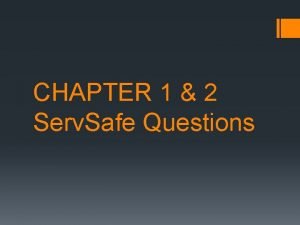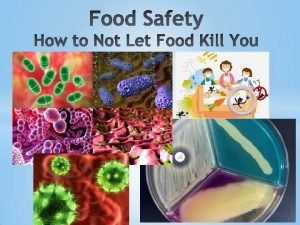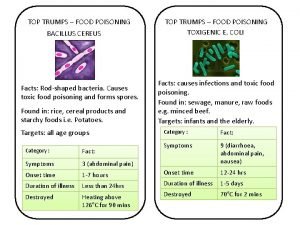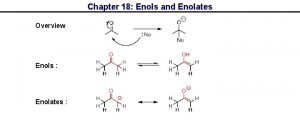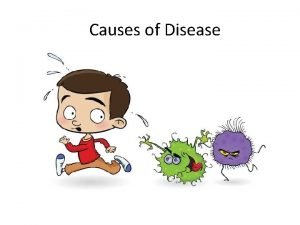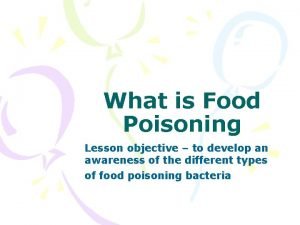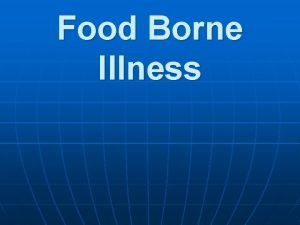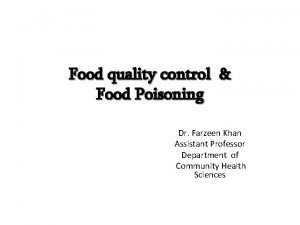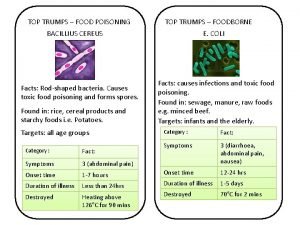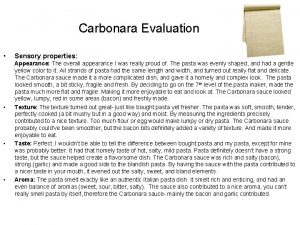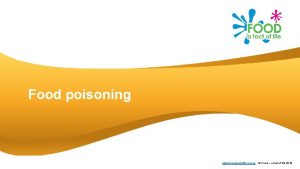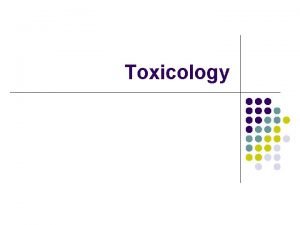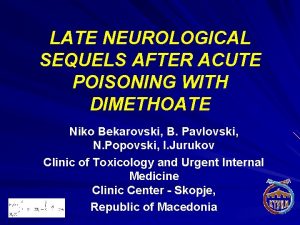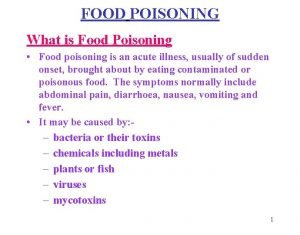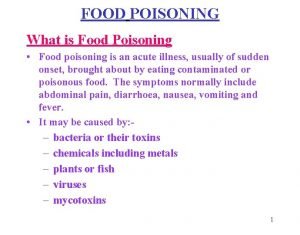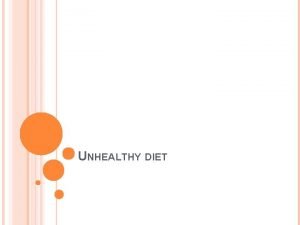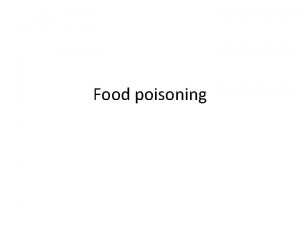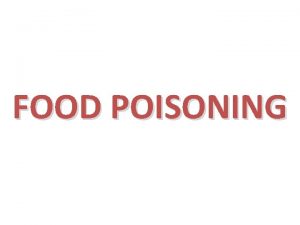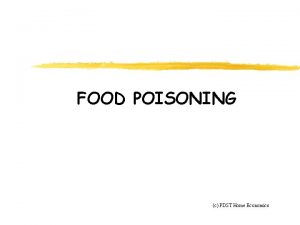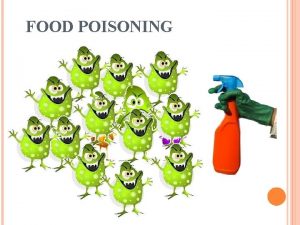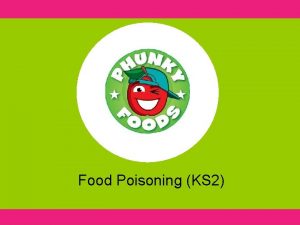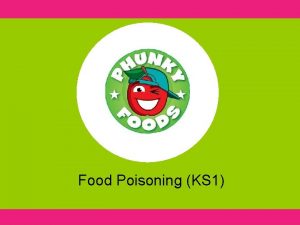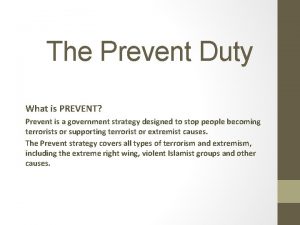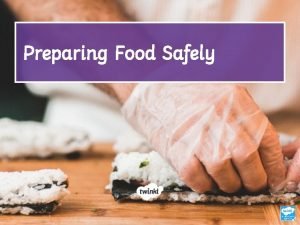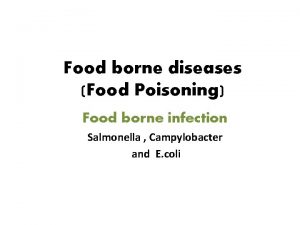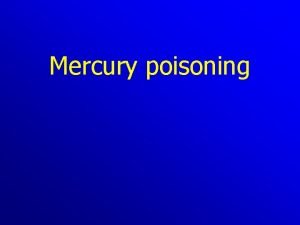The 4 Cs how to prevent food poisoning
















- Slides: 16

The 4 Cs – how to prevent food poisoning © Livestock & Meat Commission for Northern Ireland 2015

Learning Objectives • To identify the four main ways to prevent food poisoning. • To explain the importance of effective cleaning and identify areas that need particular attention. • To illustrate the importance of good temperature control in preventing food poisoning. • To explain cross-contamination and identify ways to avoid this. © Livestock & Meat Commission for Northern Ireland 2015

The 4 Cs Food hygiene is necessary in order to make food which is safe to eat. This involves more than just being clean. A simple way to remember is the 4 Cs: • Cleaning • Cooking • Chilling • Cross contamination. © Livestock & Meat Commission for Northern Ireland 2015

Cleaning • Cleaning the kitchen is important to keep food safe and prevent bacteria from spreading. • ‘Clean as you go’ means people make sure that they clean the area and utensils they have been working in or with, as they prepare food. • This avoids build up of mess and leads to better hygienic conditions. © Livestock & Meat Commission for Northern Ireland 2015

Cleaning Worktops • Always wash worktops before food preparation begins. • Wipe up any spilt food straight away. • Always sanitise worktops thoroughly after they have been touched by raw meat, including poultry or raw eggs. • Do not put ready to eat food, such as bread, salad or fruit on a worktop or chopping board that has been touched by raw meat, unless it has been washed thoroughly first. © Livestock & Meat Commission for Northern Ireland 2015

Cleaning Knives, spoons and other utensils • Using clean utensils will prevent the spread of bacteria. • After touching raw meat, utensils should be washed thoroughly. Cleaning materials • Detergents (such as washing up liquid) – dissolve grease and help remove left over food. They do not kill bacteria. • Disinfectants – reduce the number of bacteria to a safe level but do not remove grease well. • Sanitizers – designed to remove grease and dirt AND disinfect. • Sterilants – kill bacteria completely. © Livestock & Meat Commission for Northern Ireland 2015

Cooking • Hot food must be served piping hot, that is above 63°C. • Bacteria will begin to die when the temperature rises above 60°C. • Some foods change colour when they are cooked. © Livestock & Meat Commission for Northern Ireland 2015

Cooking • Cooking or reheating food properly kills most of the harmful bacteria which can cause food poisoning. Food should be cooked or reheated until it is steaming hot (with a core temperature of at least 70°C for cooked food and 75°C for reheated food). • Comminuted meats, such as burgers or sausages, should always be cooked until the juices run clear and they are no longer pink on the inside. • Always pre-heat the oven before cooking and follow the cooking times on labels or in recipes © Livestock & Meat Commission for Northern Ireland 2015

Cooking • Large joints of meat need special care to ensure that the centre is properly cooked. A meat thermometer can help make sure that the correct temperature has been reached. • Frozen meat must be thawed all the way through before cooking. The best way to thaw frozen meat is in a covered container in the bottom of the fridge or using a microwave oven. • Food that is cooked for eating later should be cooled as quickly as possible (ideally within 90 minutes) and then stored in the fridge above raw foods until use. • Never reheat cooked food more than once and make sure to reheat until it is piping hot all the way through. © Livestock & Meat Commission for Northern Ireland 2015

Chilling Reducing the temperature below 5°C slows the reproduction of micro – organisms helping to reduce the risk of food poisoning. Food in the fridge should be stored: Top shelf: Next shelf: Dairy products Cooked meats Raw meats (covered to prevent drips) Bottom: Salad and vegetables © Livestock & Meat Commission for Northern Ireland 2015

Chilling Always ensure that: • Foods are covered and ideally labelled; • Uneaten foods are not stored in their cans as this can lead to contamination of the food; • Your fridge is not too full as air needs to circulate in order to keep the food cold; • You do not put hot food straight into the fridge as it will raise the temperature potentially causing bacterial multiplication in other foods; • You empty and clean out your fridge regularly. © Livestock & Meat Commission for Northern Ireland 2015

Frozen storage • Ensure the freezer is working at a temperature below -18 °C. • Do not place hot foods in the freezer or leave the door open for extended periods. • Do not overload the freezer. Cold air needs to circulate around the food. • Store food with a label showing the contents and the date. Food should be wrapped well to prevent it drying out. Only freeze food when at its best condition, to allow the food to last longer. • Keep the freezer clean by removing spills and food deposits when they occur. • Never refreeze defrosted food, as this increases the growth of bacteria. © Livestock & Meat Commission for Northern Ireland 2015

Cross contamination occurs when bacteria are transferred from food or surface to another. Contamination can be: • Direct – where food touches or drips onto another food transferring bacteria • Indirect – where bacteria on hands, work surfaces or equipment are spread to food. • Pets and pests should be kept away from food and food preparation areas. © Livestock & Meat Commission for Northern Ireland 2015

Ways to prevent cross contamination • Hands should always be washed after handing raw food, handling rubbish or waste food and going to the toilet. • Roll long sleeves up and wear a clean apron to stop bacteria from being transferred from your clothes to the food. • Remove any jewellery that might harbour dirt and bacteria. • Raw and ready-to-eat food should be stored separately. © Livestock & Meat Commission for Northern Ireland 2015

Ways to prevent cross contamination • Different utensils should be used for raw and readyto-eat food, or cleaned in between preparing different types of food. • Use a clean spoon when tasting food rather than your fingers. • Use separate clean knives and chopping boards for raw and cooked food. Perhaps use a coloured board (red) for raw meat. • Ensure raw meat is covered and stored separately on the lowest shelf of the refrigerator. © Livestock & Meat Commission for Northern Ireland 2015

Acknowledgement For further information, go to: www. food 4 life. org. uk © LMC 2015 © Livestock & Meat Commission for Northern Ireland 2015
 A food handler stored a sanitizer spray bottle
A food handler stored a sanitizer spray bottle Food poisoning
Food poisoning Bacillus cereus symptoms
Bacillus cereus symptoms Food poisoning cause
Food poisoning cause Exaggerated sims
Exaggerated sims Icd 10 jatuh
Icd 10 jatuh Food poisoning cause
Food poisoning cause Lesson plan on food poisoning
Lesson plan on food poisoning Gastroenterritis
Gastroenterritis Common factors that can lead to food poisoning
Common factors that can lead to food poisoning Food top trumps
Food top trumps Overall appearance
Overall appearance Foodafactof life
Foodafactof life Unit 2 food food food
Unit 2 food food food Grazing food chain diagram
Grazing food chain diagram Dioxin poisoning
Dioxin poisoning Dimethoate poisoning
Dimethoate poisoning
